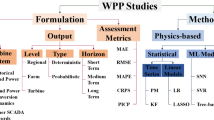Abstract
Computational grids hold great promise in utilizing geographically separated heterogeneous resources to solve large-scale complex problems. However, they suffer from a number of major technical hurdles, including distributed resource management and effective job scheduling. The main focus of this work is devoted on online scheduling of real time applications in distributed environments such as grids. Specifically, we are interested in applications with several independent tasks, each task with a prespecified lifecycle called deadline. Here, our goal is to schedule applications within an optimum overall time considering the specified deadlines. To achieve this, the resource performance prediction based on workload modeling and with the help of queuing techniques is employed. Afterward, a mathematical neural model is used to schedule the subtasks of the application. The main contributions of this work is to incorporate the impatiency factor as well as resource fault in performance modeling of nondedicated distributed systems, and also presenting an efficient and fast parallel scheduling algorithm under time constraint and heterogeneous resources. The proposed model is appropriate for implementation on parallel machines and in O(1) time. The new model was implemented on GridSim toolkit and under various conditions and with different parameters to evaluate the performance of scheduling algorithm. Simulation outcomes have shown that approximately in 87.8% of cases, our model schedules the tasks in such a way that all constraints are satisfied.
Similar content being viewed by others
References
Foster I, Kesselman C (eds) (2004) The grid: blueprint for a future computing infrastructure. Morgan Kaufmann, San Mateo
Aktaruzzaman M Liteature review and survey: resource discovery in computational grids. School of Computer Science, Univerity of Windsor, Ontario, Canada
Vadhiyar S, Dongarra J (2003) A performance oriented migration framework for the grid. In: Proc. of the 3rd international symposium on cluster computing and the grid (CCGrid’03), Tokyo, Japan, May 2003, pp 130–139
Yang L, Schopf JM, Foster I (2003) Conservative scheduling: using predicted variance to improve scheduling decisions in dynamic environments. In: Proc. of the ACM/IEEE super computing 2003 conference, Phoenix, Arizona, USA, November 2003, pp 31–46
Sensor networks. http://www.sensornetworks.net.au/network.html
Rodriguez A, Gonzalez A, Malumbers MP (2004) Performance evaluation of parallel mpeg-4 video coding algorithms on clusters of workstations. In: Int conf parallel computing in electrical engineering (PARELEC’04), pp 354–357
Smallen S, Casanova H, Berman F (2001) Tunable on-line parallel tomography. In: Proceedings of SuperComputing’01, Denver, Colorado, November 2001
Kak AC, Slaney M (1998) Principles of computerized tomography imaging. IEEE Press, New York
Frank J, Radermacher M (1986) Three-dimensional reconstruction of nonperiodic macromolecular assemblies from electron micrographs. In: Koehler JK (ed) Advanced techniques in biological electron microscopy III. Springer, Berlin
Movaghar A (1997) Optimal assignment of impatient customers to parallel queues with blocking. Sci Iran 3:137–146
Movaghar A (2005) Optimal control of parallel queues with impatient customers. Perform Eval 60:327–343
Kleinrock L, Korfhage W (1993) Collecting unused processing capacity: an analysis of transient distributed systems. IEEE Trans Parallel Distrib Syst 4(5):535–546
Leutenegger S, Sun XH (2003) Distributed computing feasibility in a non-dedicated homogeneous workstations. In: Proceedings of the 1993 ACM/IEEE conference on supercomputing, pp 143–152
Leutenegger S, Sun XH (1997) Limitation of cycle stealing of parallel processing on a network of homogeneous workstations. J Parallel Distrib Comput 43(2):169–178
Gong L, Sun X, Watson E (2002) Performance modeling and prediction of nondedicated network computing. IEEE Trans Comput 51(9):1041–1055
Adler M, Gong Y, Rosenberg A (2003) Optimal sharing of bags of tasks in heterogeneous clusters. In: Proceedings of the fifteenth annual ACM symposium on parallel algorithms and architectures, San Diego, California
Li Y, Mascagni M (2003) Improving performance via computational replication on a large-scale computational grid. In: Proc. of the IEEE international symposium on cluster computing and the grid (CCGrid’03), May 2003
Ghare G, Leutenegger L (2004) Improving speedup and response times by replicating parallel programs on a SNOW. In: Proceedings of the 10th workshop on job scheduling strategies for parallel processing, June 2004
Bhatt S, Leighton CFF, Rosenberg A (1997) An optimal strategies for cycle-stealing in networks of workstations. IEEE Trans Comput 46(5):545–557
Foo YPS, Takefuji Y (1991) Integer linear programming neural networks for job-shop scheduling. In: IEEE int conf neural networks, pp 1361–1366
Chang CY, Jeng MD (1995) Experimental study of a neural model for scheduling job shop. In: IEEE int conf system, man, cybernetics, vol 1, pp 536–540
Gallone JM, Charpillet F, Alexandre F (1995) Anytime scheduling with neural networks. In: Proc 1NRIA/IEEE Symp
Huang YM, Chen RM (1999) Scheduling multiprocessor job with resources and timing constraints using neural networks. IEEE Trans Syst Man Cybern 29(4):559–565
Abawajy JH (2002) Job scheduling policy for high throughput computing environments. In: Proc of 9th int conf parallel and distributed systems (ICPADS)
Cinlar E (1975) Introduction to stochastic processes. Prentice-Hall, Englewood Cliffs
Movaghar A (1998) On queuing with customer impatience until the beginning of service. Queuing Syst 29:337–350
Hopfield JJ, Tank DW (1985) Neural computation of decision in optimization. J Biol Cybern 52:141–152
Wilson GV, Pawley GS (1988) On stability of the traveling salesman problem algorithm of Hopfield and Tank. Biol Cybern 58:63–70
Paielli RA (1988) Simulation tests of the optimization method of Hopfield and Tank using neural networks. NASA technical memorandom 101047
Takefuji Y (1992) Neural network parallel computing. Kluwer Academic, Dordrecht
Gridbus project website. http://www.gridbus.org/gridsim/
Parallel workload archive. http://www.cs.huji.ac.il/labs/parallel/workload/
Author information
Authors and Affiliations
Corresponding author
Rights and permissions
About this article
Cite this article
Kalantari, M., Akbari, M.K. Fault-aware grid scheduling using performance prediction by workload modeling. J Supercomput 46, 15–39 (2008). https://doi.org/10.1007/s11227-008-0183-3
Received:
Accepted:
Published:
Issue Date:
DOI: https://doi.org/10.1007/s11227-008-0183-3




